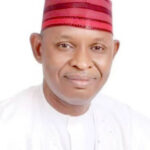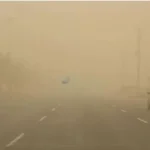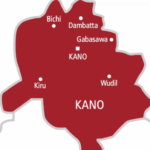I first arrived in Kano in 1966 as a Peace Corps Volunteer. I returned in 1973 to study the spatial growth of the city for my Ph.D. dissertation. I have been returning regularly ever since then (six times) to follow up on my original study.
One thing that I have noticed is that Kano keeps eliminating its open spaces so that few remain. In colonial times, there was a greenbelt and after independence, there was the agricultural farm area along Zaria Road, the racetrack area in Nassarawa, the Trade Fair area south of Kofar Nassarawa, the open fields at the central mosque in the old city, the praying field outside of Kofar Mata, the area north of Sabon Gari (now Nomans land) and the open area to the west of Birnin Kano around Goron Dutse. They have all been over run, including the small Yakuku Gowon Park near the Sabon Gari Market. When I was last in Kano in 2016, I asked many people why there were so few open spaces in such a large city.
- Why Nigeria’s maternal mortality amongst highest in the world
- COVID-19: Malami orders NDLEA to halt screening of 5,000 candidates
I was told that Hausa people value open spaces, but since there is a high demand for land to build houses as the population grows, the open land is encroached upon. But every major city in the world, of which Kano is one, has open areas, large parks and plazas to allow the city to breathe and provide places for people to spend time in an uncrowded atmosphere. Anyone who has visited New York City knows of Central Park and then there is Kensington Park in central London. In Moscow there is Kremlin Square and other parks and in Beijing there is the huge square in front of the Forbidden City. I could go on and on with so many other examples.
Kano has one remaining open area which is the zoo and botanical gardens. It has beautiful trees and is a pleasure to visit, as I have done many times. Now there is talk of filling it in with shops, which would eliminate the last remaining large open space in dense urban Kano. There is plenty of room for housing on the periphery of the built-up area and the city has been expanding in that way for many decades. Also, there are already dozens and dozens of shops, a couple of banks, a large indoor mall, and a large department store along Zoo Road from Zaria Road to the Zoo. There is no need for more shopping in that area.
The authorities should preserve the zoo and botanical gardens for everyone to enjoy today and for posterity. If that is not done, in the future, everyone will wonder where is there any open space in dense, crowded, urban Kano.
Written by Alan Frishman, Professor Emeritus of Economics, Hobart and Wm. Smith Colleges, 300 Pulteney Street, Geneva, NY 14456

 Join Daily Trust WhatsApp Community For Quick Access To News and Happenings Around You.
Join Daily Trust WhatsApp Community For Quick Access To News and Happenings Around You.


